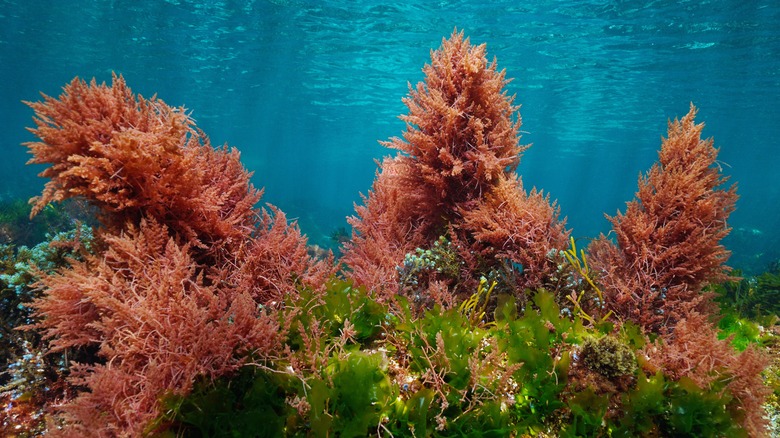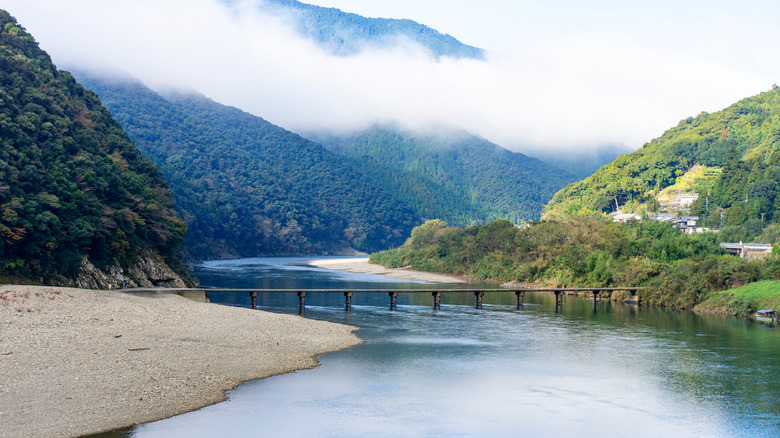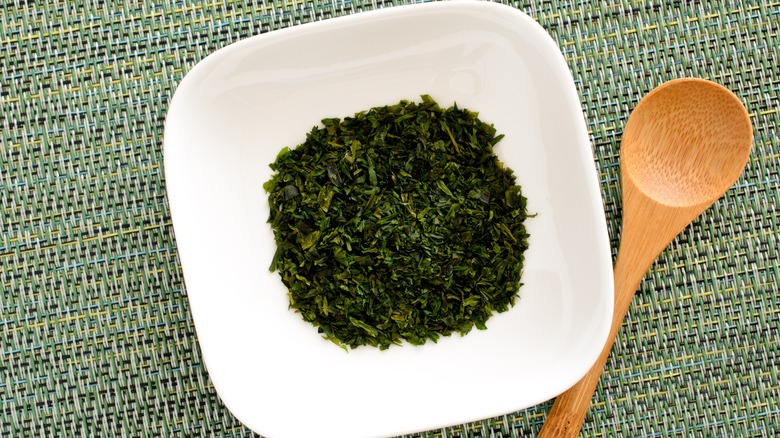Suji Aonori: The Lush Seaweed Grown In A Japanese River
In Japan, Tokyo Restaurants Guide says that more than twenty species of seaweed are used in food — and maybe you should be eating more of it too. As vegetables of the sea, seaweeds are rich in vitamins, minerals, and plant-based protein. A 2011 review published from the National Library of Medicine found that seaweed protein delivers all nine essential amino acids. This, combined with its hydrocolloid content and ability to replicate heme (the iron-rich molecule that makes meat red), has made the ocean veggies a great meat substitute (per Smithsonian Magazine).
From kelp-based burgers to bacon and from "superfood" spirulina powders to sea moss gels, there are many different ways for you to incorporate more seaweed into your diet, according to Umaro Foods and Real Simple. However, aside from the ever-so-popular seaweed snacks and nori wraps, most Americans have only dipped their toes into the types of seaweed the ocean offers. You've likely had wakame, commonly used in seaweed salads, and kombu, the star seaweed in your miso soup (via Integrative Nutrition) — but don't let it stop there. Another popular seaweed that's famous in Japan goes by the name of suji aonori. Even more novel is that this lush seaweed grows in only one place.
It comes from clear water and has a neutral, versatile flavor
Suji aonori is unique to other seaweeds because, rather than growing in the ocean, it grows in rivers. According to Tokyo Restaurants Guide, the most famous suji aonori grows in one river: the Shimanto River in the Kōchi prefecture of Japan. It is harvested by hand from the river's estuary (via Kochi Fresh), where it meets the Pacific Ocean, from December to March. After gathering the seaweed by hand, it's hung to dry in the air before being processed, usually into dried strands, flakes, or a paste.
Because the suji aonori only grows within the estuary of the Shimanto River, it develops its own unique taste. Atlas Obscura says that the estuary's fresh, clear water provides a less fishy, more neutral flavor profile, unlike other types of seaweed. While suji aonori may come at a higher price point, its light and slightly briny taste makes it extremely versatile.
Enjoy suji aonori as a paste, flakes, or tempura fried
Not all seaweeds have the same flavor and taste. As Trish Deseine explains, wakame is slightly sweet, while nori is known to be more pungent. However, all seaweeds share the same category of taste: umami, a word that, according to Vox, roughly translates to "deliciousness." The fishy flavors that some seaweeds carry stem from their sodium content, which, coming from the ocean, is hard to avoid. While there are ways to mask the taste, some seaweeds are just saltier than others.
Suji aonori can be found as a paste, whereas Kochi Fresh says it is typically mixed with miso, soy sauce, and mirin and used in soup dishes. It's also sold in the form of dried flakes and strips, most often seared and used as a seasoning sprinkled over warm white rice, per Tokyo Restaurants Guide. But in Kōchi, the Japanese prefecture on Shikoku Island where the luscious seaweed grows (via Britannica), suji aonori is served best when tempura fried and with sake. Coated and lightly fried in a flour and egg mixture, the suji aonori maintains its fresh and earthy flavor — just with the added satisfaction of a crunch.


